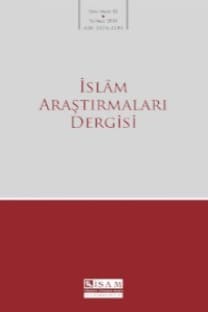Multi-Dimensional Functions of Ottoman Poetry
Ottoman poetry has been generally recognized as a literary corpus and assessed with aestetic and literary criteria within its own limits. However, according to recent studies it has multifunctional features that relate to many arts. Ottoman poetry increased its own function by serving other arts and fields to the same extent that the political and economic success affected artistic inclinations during the sixteenth century. In particular, literary texts that were inscribed on architectural monuments, artistic works in themselves, both increased the aesthetic features of the edifice and made contributions to the field of history and art history by adding literary, artistic, historical and biographical richness and value. This is the multifunctional aspect of Ottoman poetry. Chronograms, epigraphs and inscriptions, which are the intersections of poetry and architecture, are essential examples of this multifunctional feature. This study aims to examine the multidimensional functions of poetry as reflected in the inscriptions, epigraphs and chronograms that have been engraved on architectural monuments, such as mosques, fountains, hospitals, baths, tombs, shrines and gravestones. Since this study focuses only on the 16th century, it will make contribution to the few number of works that have been written in this field, in which literature meets architecture, which to date have been mainly concerned with later eras, like the 17th, 18th and 19th centuries.
Keywords:
Ottoman poetry, architecture, chronograms, inscriptions epigraphs,
___
- Serdaroğlu, Vildan, “When Literature and Architecture Meet: Architectural Images of the Beloved and the Lover in Sixteenth-Century Ottoman Poetry”, Muqarnas, an Annual on the Visual Culture of the Islamic World, 23, (2006), 273-287.
- ISSN: 1301-3289
- Yayın Aralığı: Yılda 2 Sayı
- Başlangıç: 1997
- Yayıncı: TDV İslâm Araştırmaları Merkezi
Sayıdaki Diğer Makaleler
Sadreddin Konevî’de Bilgi ve Varlık
Osmanlıdan Günümüze Türk Toplum Yapısı
Doğu-Batı Felsefi Etkileşiminde İbn Rüşd ve St. Thomas Aquinas Felsefelerinin Karşılaştırılması
An Ottoman Mentality - The World of Evliya Çelebi
İlâhî Fiillerin Nedenliliği Sorunu: Gazzâlî’nin Meseleye Yaklaşımı ve Katkısı
